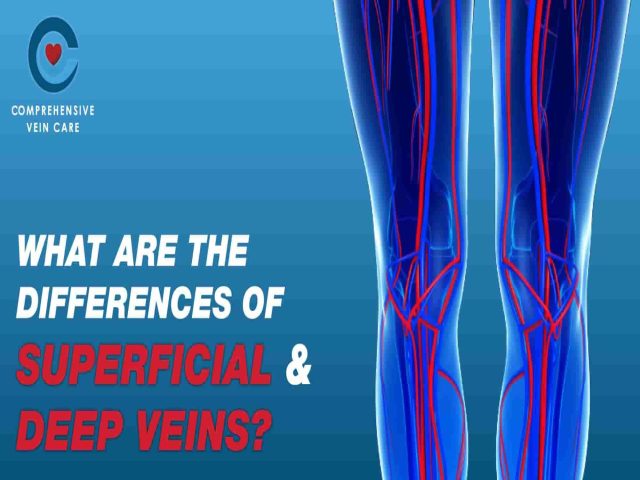Published At: 07 Feb 2020
Published By: cvc-admin

Arteries and veins are two modes that are responsible to carry blood in our bodies. Their difference in functions is what sets them apart. While arteries transport blood from the heart to the body, veins transport blood from the legs back to the heart.
Veins are divided into four categories:
- Deep Veins
- Superficial Veins
- Pulmonary Veins
- Systemic Veins
So what exactly is the difference between Superficial and Deep Veins?
Superficial Veins
Veins that are close to the body surface and visible to your eye are known as Superficial Veins. These veins are noticeable on heavyweight lifters and strength trainers during training. Superficial veins are tasked to carry blood from the tissues that are closer to the surface of the skin to the deep veins. The deep veins then push the blood toward the heart.
2 types of superficial veins exist in the lower limbs:
Great Saphenous Vein (GSV)
This is the longest vein in the body that runs from the foot, leg, thigh and up to the femoral triangle. The femoral triangle is in the upper thigh.
Lesser Saphenous Veins
The lesser saphenous vein is smaller in size compared to the GSV. Blood transportation to the popliteal vein and the lateral surface of the leg is carried out by the lesser saphenous vein.
What Is Superficial Venous Insufficiency?
Among venous diseases, superficial venous insufficiencies are quite common. When a vein’s walls and valves are damaged due to inflammatory processes superficial vein disease occurs. Your quality of life will suffer and health risks will increase if venous diseases are left untreated. Vein disease can also lead to the development of blood clots, skin changes, and ulceration.
Failure of the valves in the superficial veins disrupts the regular one-directional blood flow. The flow of blood, therefore, can flow backward and cause blood to pool in the veins. Disturbed blood circulation can lead to potential skin discolouration, ulcers, blood clots, or varicosities.
What Are Deep Veins?
As the name suggests, Deep Veins are located deep inside your body. Deep veins are larger, especially when compared to the Superficial Veins. Deep veins sit beside an artery with the same name and run through the muscles of the thigh and calf.
The seven Deep Veins in the lower limbs include:
- Popliteal
- Peroneal
- Profunda Femoris
- Common Femoral
- Femoral
- Anterior Tibial
- Posterior Tibial
Clots or thrombosis can create obstructions in the veins. Deep Vein Thrombosis (DVT) develops when a blood clot forms in the deep veins. As deep veins carry the majority of blood, any obstructions in the vein can create life-threatening conditions.
Deep veins in the legs are usually where Deep Vein Thrombosis occurs. When blood thickens commonly due to dehydration, blood clots develop. They can either cause pain, swelling, discolouration or cramping in the affected area or not present any symptoms at all.
Blood clots are not to be taken lightly as they can cause life-threatening conditions such as pulmonary embolism. This happens when a part of the blood clot breaks away and blocks a blood vessel of the lung.
If you are suffering from any Varicose or Spider Veins, Book an Appointment today with us to discuss treatment options suitable for you. Now, with minimally invasive treatment options, surgery is not the only way to lead a healthy life.